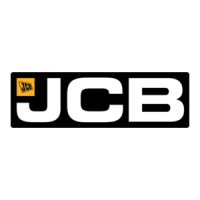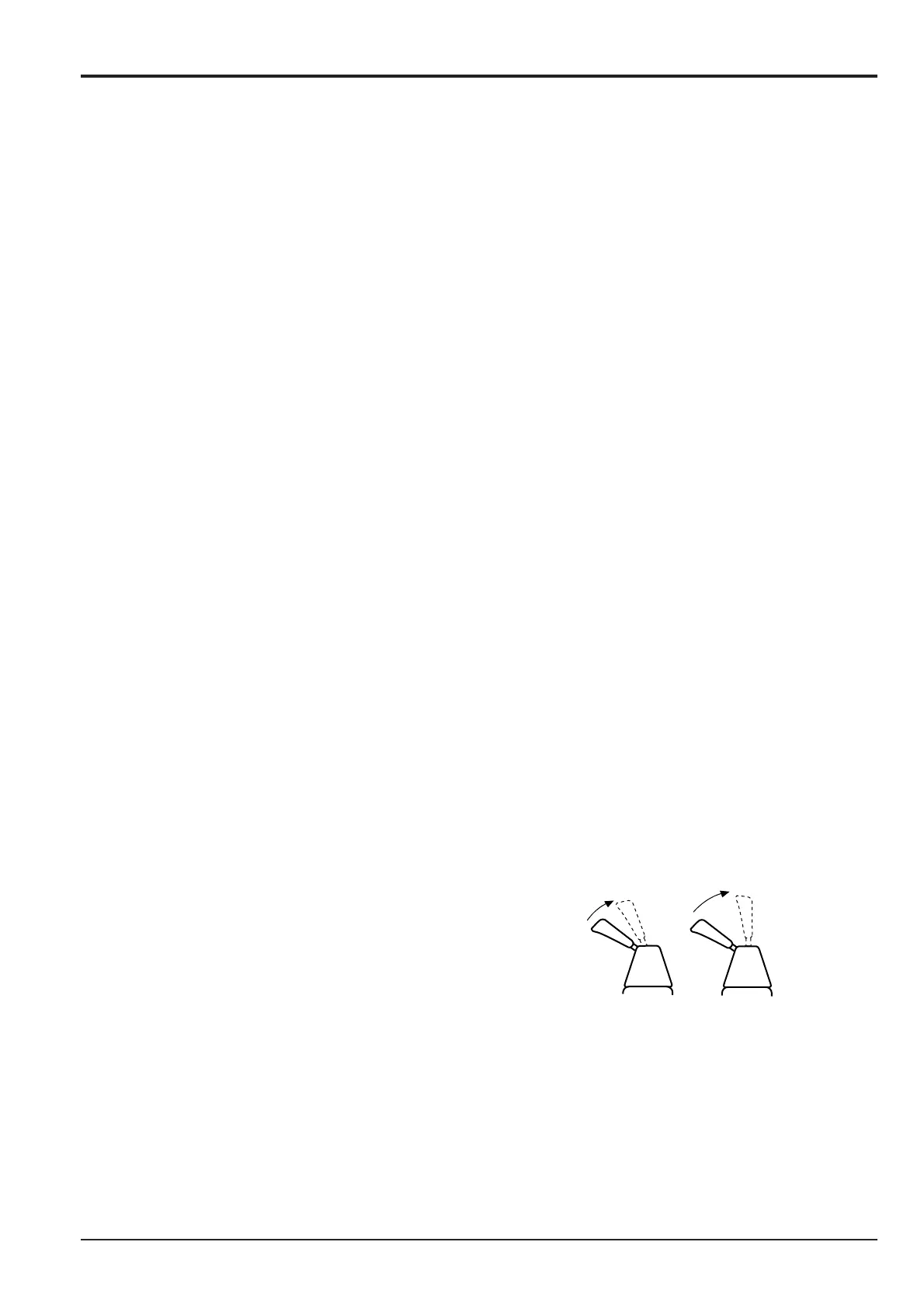90 - 2
Section E
Hydraulics
9803/6400
Section E
90 - 2
Issue 2*
Slew Motor
*
Operation (continued)
Hydraulic Motor Working Principles
(illustration reference page 83 - 1)
Oil supplied from the pump via the control valves enters port
A (or port B) on cover 17 and is discharged from port B (or
port A).
Oil which leaks past and through clearances between the
sliding parts returns to the tank via the drain port a in cover
17.
The pressurised oil supplied to port A passes through path b
in cover 17 and path c in bush 20. It is supplied for 180° of
each revolution of the motor, passing through path d in
balance plate 21 (which has crescent-shaped ports to switch
between supply and discharge), through path e of cylinder 24
and then to piston bores f of the cylinder.
Oil pressure in bores f of the piston assemblies 8 forces the
pistons down on the angled swash plate 6 via slipper feet Z.
The angle of the swash plate causes the slipper feet to ‘slide’
around the plate, rotating the cylinder assembly 24 to
produce torque at the output shaft Y.
In this way, each of piston assemblies 8 is supplied with
pressurised oil during its stroke from the top dead point to the
bottom dead point and this hydraulic pressure is converted to
torque which turns cylinder assembly 24. The oil is
discharged during the piston stroke from the bottom dead
point to the top dead point.
The oil discharge path is the reverse of the supply path
described above and the oil is discharged from port B. The
output torque of the hydraulic motor is determined by the
supply pressure and the rotational speed.
Mechanical Brake Working Principles
The mechanical brake serves as a parking brake for the
machine.
Friction plate 9 is splined to the periphery of cylinder
assembly 24 and mating plate 10 is connected to housing 25.
When the servo pressure at the brake release port X is zero,
the spring 14 force acts through brake piston 12 to press the
friction and mating plates together, locking cylinder 24
(output shaft) to housing 25 so that it cannot rotate. When
the servo pressure at brake release port X is 40 kgf/cm
2
(568
lbf/in
2
), the pressure at the brake piston overcomes the
spring force and the brake piston moves to the end face
between the friction and mating plates, releasing the brake.
Make-Up Valve Working Principles
1 Under partial hydraulic cross-line relief braking
(relief valve not functioning).
When slowing down the slew structure with the hand
control valve lever in the half-way position, the volume of
oil supplied to port A from the pump is reduced. If the
rotational speed of the slew structure is relatively high,
the motor acts as a pump and causes a negative
pressure to develop at c and oil must be supplied to
avoid cavitation. If the pressure at port B is lower than
the cross-line relief valve operating pressure and the
supply of oil from the control valve is insufficient to
provide the amount of oil needed, the make-up check
valve assembly 29 - 31 operates to make up the
insufficiency at c from the make-up port V.
2 Under full hydraulic braking (cross-line relief valve
functioning).
When the lever is rapidly moved to the neutral position
from the position in paragraph 1, the supply of oil from
the pump to port A drops to zero, but the slew structure
continues to rotate due to inertia. In this case, port B
cross-line relief valve J operates and the oil from the
relief valve passes through the paths g and h, pushes
open port B make-up check valve 29 and is supplied to
paths b and c. As oil is short by the amount of leakage
past motor pistons, the make-up check valve opens and
oil is supplied to paths b and c from the make-up port to
prevent cavitation.

